Nomad Chiropractic Mosman
What is Plagiocephaly?
Plagiocephaly is an umbrella term used to describe an asymmetrical and oblique deformity of the head.
Classification of plagiocephaly is based on severity, cause, and shape of the deformity.
Infants have 24 cranial bones, the joints between these bones are called cranial sutures. During infancy it is critical that all cranial sutures remain flexible to accommodate for rapid brain growth and development.
Early fusion of the cranial sutures (craniosynostosis) can cause plagiocephaly and this is known as synostotic plagiocephaly. All synostotic plagiocephaly cases are immediately referred for medical assessment and management.
Non-synostotic plagiocephaly is synonymous with deformational, posterior, or positional plagiocephaly and presents as an asymmetrical flattening of the skull. (5)
At 4-8 weeks plagiocephaly caused by intrauterine pressure has usually resolved and persistence past this point is usually the result of a positional preference caused by cervical dysfunction. (Ref. 1,2,3,4,5,6).
Cervical dysfunction in infants can occur because of intrauterine pressures, postnatal head positions, birth trauma, congenital musculoskeletal abnormalities or spasm of the sternocleidomastoid muscle. (Ref 6,9).
Less severe cases of plagiocephaly may start to improve around 6 months when an infant learns to roll due to spending less time on their back. (2)
More serve cases of plagiocephaly do not typically self-resolve and manual therapy such as chiropractic, osteopathy or physiotherapy are standard management options. (5)
What is the prevalence of deformational plagiocephaly?
The prevalence of plagiocephaly in healthy infants is 22.1% and peaks within the first 6 months of life. (1)
Early diagnosis and management of neck dysfunction is advised to prevent positional plagiocephaly due to the high association between deformational plagiocephaly and upper cervical spinal joint dysfucntion. (5,8)
What are the risks associated with plagiocephaly?
Plagiocephaly impacts neurodevelopment affecting visual system, auditory system, motor development, cognitive development, and posture. (Ref 3,4,5,6).
Gross motor delays observed in infants with plagiocephaly is a potential marker for fine motor issues and learning difficulties observed in older children;
the risk increases for infants with a more severe plagiocephaly. (7)
How is plagiocephaly diagnosed and classified?
Primary healthcare providers in the management of paediatric patients will screen for plagiocephaly by observing facial and cranial asymmetries, any clinical suspicion of plagiocephaly will be followed up with head measurements.
Classification of severity is based on two specific head measurement scores. This classification system informs the primary health practitioner when the asymmetries are incidental, need management or need referral.
Head measurements will be retaken on subsequent visits to record changes and monitor treatment progress.
What is the difference between brachycephaly and doliocephaly?
Plagiocephaly can be categorised as either brachycephaly or dolichocephaly based on the shape of the asymmetry. Brachycephaly is visualised as a widening of the head and dolichocephaly is visualised as an elongation of the head and a narrowing of the face.
Why does plagiocephaly cause neurodevelopmental delays?
Based on the research plagiocephaly is associated with neurodevelopmental delays however it is inconclusive as to why plagiocephaly causes delays. We know that normal cervical spine function is associated with an infant’s ability and willingness to part take in recommended tummy time.
Tummy time is essential for vestibular priming and critical for age-appropriate neurodevelopment. Cervical dysfunction limits range of motion and leads to head preferencing to one side that can consequently results in skull flattening, this is how plagiocephaly is associated with cervical dysfunction.
The research is still questioning cause and effect of neurodevelopmental delays. Is it the skull flattening which is reducing the space in the skull required for normal brain growth and development that causes the delays? Or is it the consequence of aberrant cervical motion that alters tummy time and interrupts vestibular priming? Regardless the management will be the same because cervical dysfunction is indicated in both cases.
What is the chiropractor’s role in plagiocephaly management?
Early intervention in the management of plagiocephaly is associated with reduced treatment duration,improved cosmetic asymmetries, and reduced neurodevelopmental delays. 5
Chiropractors are experts in monitoring age-appropriate neurodevelopment and managing musculoskeletal dysfunction. The association between cervical dysfunction, plagiocephaly and the impact it has on neurodevelopment means that chiropractors are well placed in the management of plagiocephaly.
Chiropractors manage plagiocephaly by correcting cervical dysfunction, and cranial sutural restrictions; educating parents on positional management and monitoring head circumference and neurodevelopment.
Have any questions or queries?
We’d be more than happy to chat with you about you and your family’s needs.
Send us an email to admin@Nomadchiropractic.com.au or
Call/SMS us on 0491 064 117.
Nomad Chiropractic in Mosman has a Paediatric, Pregnancy and Family Wellness Focus.
References:
1. Bialocerkowski AE, Vladusic SL, Wei Ng C. Prevalence, risk factors, and natural history of positional
plagiocephaly: a systematic review. Developmental Medicine & Child Neurology. 2008
Aug;50(8):577–86.
2. Cabrera-Martos I, Valenza MC, Valenza-Demet G, Benítez-Feliponi A, Robles-Vizcaíno C, Ruiz-
Extremera A. Effects of manual therapy on treatment duration and motor development in infants
with severe nonsynostotic plagiocephaly: A randomised controlled pilot study. Child's Nervous
System. 2016;32(11):2211–7.
3. Cabrera-Martos I, Valenza M, Valenza-Demet G, Benítez-Feliponi A, Robles-Vizcaíno C, Ruiz-Extremera
A. Repercussions of plagiocephaly on posture, muscle flexibility and balance in children aged 3–5years
old. Child's Nervous System. 2016;32(11):2211–7.
4. Valenza M, Valenza-Demet G, Benítez-Feliponi A, Robles-Vizcaíno C, Ruiz-Extremera A.
Neurodevelopmental Delays in Children with Deformational Plagiocephaly. Child's Nervous System.
2016;32(11):2211–7.
5. Martiniuk AL, Vujovich-Dunn C, Park M, Yu W, Lucas BR. Plagiocephaly and developmental delay: A
systematic review. Journal of Developmental & Behavioral Pediatrics. 2017;38(1):67–78.
6. Vujovich-Dunn C, Park M, Yu W, Lucas B. Cognitive Outcomes and Positional Plagiocephaly. Journal of
Developmental & Behavioral Pediatrics. 2017;38(1):67–78.
7. Collett BR, Gray KE, Starr JR, Heike CL, Cunningham ML, Speltz ML. Development at age 36 months in
children with deformational plagiocephaly. Pediatrics. 2013;131(1).
8. American Academy of Pediatrics. prevention and management of positional skull deformities in
infants. pediatrics. 2011;128(6):1236-1241. Pediatrics. 2012;129(3):595–.


